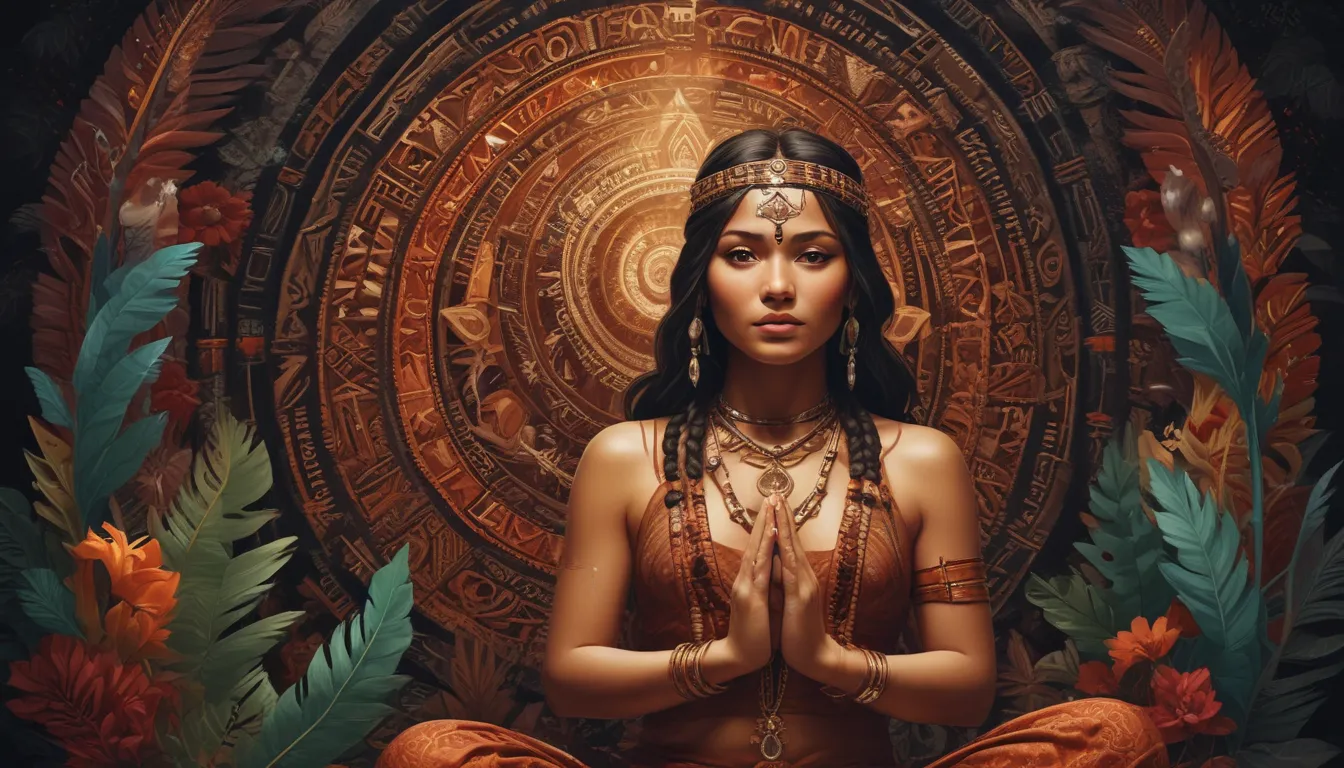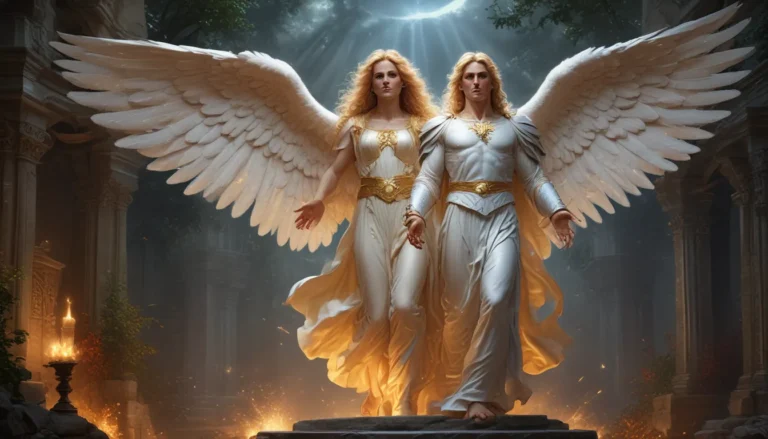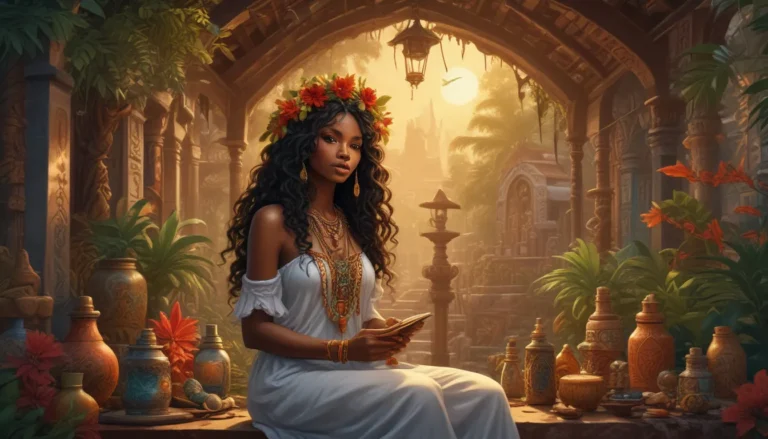The images in our articles may not match the content exactly. They are used to grab your attention, not to show the exact details in the text. The images complement the text but do not replace it.
Indigenous religions have long been an essential part of the cultural and spiritual fabric of many communities worldwide. Rooted in the traditions and beliefs of indigenous peoples who have inhabited their lands for centuries, if not millennia, these religions offer a unique perspective on the interconnectedness of humans, nature, and the spiritual realm. In this article, we will delve into 20 fascinating facts about indigenous religions, shedding light on their rich history, unique spiritual perspectives, and the challenges they face in today’s modern world.
Understanding Indigenous Religions
Indigenous religions are incredibly diverse, encompassing a wide range of beliefs and practices observed by various indigenous communities globally. These religions often emphasize harmony with nature, ancestral worship, storytelling, and communal participation. Despite facing challenges from colonialism, many indigenous religions are experiencing a revival, highlighting the importance of cultural preservation in today’s rapidly changing world.
The Significance of Animism in Indigenous Religions
Many indigenous religions incorporate animistic beliefs, which center around the presence of spirits or supernatural beings in the natural world. These spirits are viewed as influential forces that must be respected and honored, showcasing the deep spiritual connection indigenous peoples have with their environment.
Embracing the Oral Tradition
The oral tradition plays a crucial role in the transmission of indigenous religious beliefs and practices. Sacred stories, myths, and rituals are passed down through spoken word and storytelling, ensuring the authenticity and integrity of these traditions are preserved across generations.
Honoring Ancestors in Indigenous Religions
Ancestor worship holds a significant place in indigenous religions, with many communities seeking guidance and wisdom from their forebears. This practice serves to maintain a strong connection to cultural heritage and traditions, fostering a sense of continuity and identity within indigenous communities.
Promoting Harmony Between Humans and Nature
Indigenous religions place a strong emphasis on the interconnectedness between humans and the natural world. By teaching the value of living in harmony with nature and recognizing the spiritual essence present in all living beings, these religions promote environmental stewardship and a holistic worldview.
Exploring Rituals and Ceremonies
Rituals and ceremonies are integral components of indigenous religions, serving as important markers of spiritual significance and cultural identity. These practices often involve song, dance, prayer, and the use of sacred objects to invoke spiritual connections and blessings.
Sacred Land and Spiritual Connection
Land holds immense sacredness in indigenous religions, with specific locations regarded as spiritually significant. These sacred lands serve as venues for rituals, ceremonies, and gatherings, and are revered, protected, and preserved by indigenous communities.
Shamans and Spiritual Leaders
Shamans and spiritual leaders play a vital role in indigenous religions, acting as intermediaries between the human and spiritual realms. Responsible for healing, divination, and maintaining spiritual balance within the community, these individuals hold a respected and pivotal position within indigenous religious practices.
Nurturing Indigenous Languages
Indigenous languages hold deep cultural and religious significance, often being utilized in sacred ceremonies, prayers, and chants. By honoring and preserving these languages, indigenous communities maintain a connection to their cultural heritage and ancestral wisdom.
Resisting the Impact of Colonialism
Colonialism has had a profound effect on indigenous religions, leading to the suppression and erosion of these belief systems. However, many indigenous communities are actively working towards revitalizing and preserving their religious practices in the face of historical challenges.
The Resurgence of Indigenous Religions
In recent years, there has been a revitalization of indigenous religions, as communities reclaim their cultural practices and assert the importance of their religious heritage. These movements highlight the resilience and determination of indigenous peoples in preserving their spiritual traditions.
Embracing Sacred Symbols
Sacred symbols hold profound cultural and religious significance in indigenous religions, serving as visual representations of spiritual concepts and beliefs. These symbols evoke a sense of spirituality and connection, enriching the religious experiences of adherents.
Fostering Balance and Harmony
Indigenous religions emphasize the importance of maintaining balance and harmony within oneself, the community, and the natural world. This holistic approach to spiritual well-being underscores the interconnectedness of all living beings and the necessity of fostering mutual respect and understanding.
Honoring Dreams and Visions
Dreams and visions play a significant role in indigenous religions, often viewed as messages from the spiritual realm. Indigenous individuals interpret these experiences to gain insight, guidance, or warnings from ancestors or spiritual beings, deepening their spiritual connection and understanding.
Preserving Cultural Identity Through Storytelling
Storytelling is a cornerstone of indigenous religions, allowing for the transmission of sacred knowledge and teachings across generations. Through storytelling, important spiritual lessons are imparted, and cultural identity is strengthened, fostering a sense of community and unity.
Embracing Sacred Time
Indigenous religions often align rituals and ceremonies with celestial events, seasons, or natural cycles, embracing the concept of sacred time. This practice deepens the spiritual connection with the natural world and honors the cyclical rhythms that govern life and existence.
Beliefs in Multiple Realms
Many indigenous religions believe in the existence of multiple realms, each inhabited by spiritual beings and energies. These realms, including the physical world, the spirit world, and interconnected dimensions, offer a comprehensive understanding of the spiritual cosmology that governs indigenous belief systems.
Upholding Indigenous Rights and Traditions
Indigenous religions and indigenous rights are closely intertwined, with the recognition and respect of religious beliefs playing a crucial role in upholding cultural autonomy and identity. Respecting indigenous traditions is essential for supporting the overall rights and well-being of indigenous communities.
Celebrating the Sacred Role of Women
Women hold significant roles within indigenous religious practices, serving as spiritual leaders, healers, and guardians of sacred knowledge. By empowering and recognizing women in these roles, indigenous communities foster balance, equality, and spiritual harmony within their religious traditions.
Embracing the Vibrancy of Indigenous Religions
The richness and diversity of indigenous religions offer profound insights into humanity’s spiritual relationship with the natural world. By honoring and preserving these invaluable cultural practices, we can gain a deeper understanding of interconnectedness, ancestral wisdom, and the importance of cultural heritage in shaping our collective spiritual journey.
FAQs:
-
What are indigenous religions?
Indigenous religions are the spiritual beliefs and practices of indigenous peoples deeply rooted in specific cultures, traditions, and the natural world. -
Where are indigenous religions practiced?
Indigenous religions are practiced in various regions globally, including Africa, Asia, the Americas, and the Pacific Islands. -
What are some common elements of indigenous religions?
Common elements include a strong connection to nature, reverence for ancestors, storytelling through myths and legends, rituals, and communal participation. -
How do indigenous religions relate to the environment?
Indigenous religions view the natural world as sacred and emphasize living in harmony with nature, promoting environmental stewardship and sustainable practices. -
Are indigenous religions still practiced today?
Yes, indigenous religions continue to be practiced by many indigenous communities, serving as an integral part of their cultural identity and heritage.
By exploring the fascinating world of indigenous religions, we gain a deeper appreciation for the diverse spiritual traditions that shape our understanding of the world around us. In celebrating the rich tapestry of indigenous cultures, we honor the interconnectedness of all beings and the wisdom passed down through generations. Let us continue to learn, respect, and preserve the invaluable heritage of indigenous religions as we navigate our spiritual journey in harmony with the natural world.






